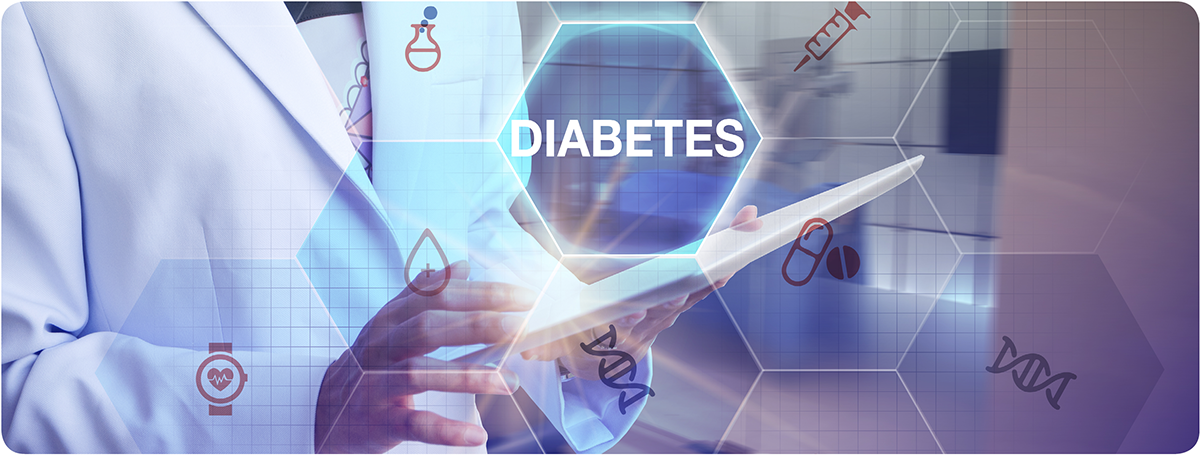28th May 2019


Prof. Dr. Freimut Schliess talks collaboration and the potential of digital innovation to improve the management of diabetes.
Prof. Dr. Freimut Schliess is the Director of Science & Innovation at Profil GmbH, an EIT Health Core Partner in Neuss, Germany. Areas of activity include molecular medicine, integrated personalised diabetes management and data-driven health solutions. He has longstanding experience in both academic and business-driven life sciences and is the leader of the EIT Health CLOSE Innovation Project.
Diabetes is a multidimensional challenge, affecting approximately 60 million Europeans. The prevalence of the disease is increasing among all age groups, mostly due to increases in obesity, unhealthy diets and physical inactivity. Innovation has huge potential to improve the patient experience, and overall management, of diabetes. Diabetes could serve as a paradigm for breaking down treatment inertia and narrowing the gap between the efficacy of medicines seen in clinical trials and the lower-than-expected effectiveness of drugs observed in real-world chronic care – what has been called the E2E gap.
When it comes to reducing this gap and making real progress against diabetes, innovative digital approaches hold great promise, but to be effective they must involve all stakeholders in the solution – including, importantly, patients themselves. This is where an organisation like EIT Health can make a difference. Among EIT Health’s real strengths is the network’s ability to bring together diverse sectors and stakeholders, including citizens, to collaborate openly in improving how we address conditions such as diabetes. A multidimensional challenge requires a multidimensional approach to finding solutions.
Diabetes is a data management disease
Diabetes has been described as a data management disease. The core component of contemporary diabetes treatment is to use real-time and real-life metabolic and behavioural data to inform patient management decisions. Everyday diabetes management involves the generation of a vast amount of data – creating exciting opportunities for investment in personalised and integrated diabetes care.

In a collaboration involving the JDRF diabetes association and IBM, big databases have been established in an attempt to create a catalogue of the typical traits of type 1 diabetes. Such a development would allow us to predict the onset of type 1 diabetes and to model the progression of the disease.
Innovation barriers: EIT Health brings the much-needed cross-sectoral approach
Although these developments show there is a vibrant space for people-centred innovation, particularly in diabetes medicine development and care provision, there are several innovation barriers that need to be addressed in order to bring clinically validated solutions of high quality to market. Cross-sectoral topics are best addressed in an open and collaborative environment that integrates actors from research and development, clinical research, education and training, healthcare service provision, and reimbursement – with patients playing an active role throughout. The organisation I work for, Profil GmbH, is a core partner in EIT Health because the partnership provides such an environment. EIT Health addresses several key topics in an open and collaborative forum, with the involvement of all relevant stakeholders, including:
- Co-creation: involvement of patients and other stakeholders early in the design and evaluation of digital solutions. Co-creation gives all stakeholders joint decision-making power in areas such as marketing authorisation, added value definition and eligibility for reimbursement. Many EIT Health projects involve co-creation and the network encourages and supports continued advancement in this area.
- Data: the debate is on ownership, availability, integrity, and remuneration of data sharing. Data management policies and systems securing inter-operability, privacy and cyber-resilience are considered of utmost importance. The EIT Health Think Tank outlined a number of recommendations that aim to address the realisation of possibilities of data in healthcare in its 2018 report, “The Use of Existing Big Data to Improve Healthcare”.
- Regulation: quality assurance and regulatory requirements for lifestyle apps and apps that are part of medical devices actively managing the patients’ treatment need to be clarified. Also the exploitation of real-world data repositories for marketing authorisation and informing personalised treatment decisions is a key area of concern. The EIT Health CLOSE Innovation Project, which I am working on (See Box), addresses the overall care environment for patients with uncontrolled type 2 diabetes.
Digitalisation is already making a difference, and the future is promising
The digital approach to diabetes is already having an impact in a range of areas. Digital diabetes technologies available today include devices for real-time continuous glucose monitoring (rtCGM) and automated insulin delivery (AID), such as artificial pancreas systems (See Box). These advances can be considered transition technologies, adhering to a mainly glucocentric approach to developing new anti-diabetic medicines and facilitating the patients’ self-management of diabetes. I personally believe that digital tools continuously assessing cardio-respiratory functionalities have a high potential for bringing the real world to well-controlled early phase clinical trials – thereby increasing the predictive value and external validity of these trials. This may help to decrease the risk of financial losses incurred when medicine development programmes are discontinued, or when medicines are withdrawn from the market. The early assessment of digital biomarkers will also contribute to a higher cost effectiveness of therapies by reducing treatment inertia, thereby improving the treatment of patients in the real world and narrowing the E2E gap.
Digital solutions are expected to be gradually integrated as part of interconnected ecosystems combining digital health and social care. The comprehensive monitoring of metabolic signatures and parameters reflecting patterns of everyday behaviour will produce a huge amount of real‐world data that could be processed by self-learning control algorithms. The outcome will include an adjustment of therapies, treatments and behavioural patterns, which again will feed back to the captured parameters. Promoting digital innovation for gradually optimising diabetes management in a personalised way may realise the twin objectives of improving everyday metabolic control and re‐adapting behavioural habits to prolong a patient’s independence and prevent the development of frailty and disability and comorbid conditions.
PUBLISHED: 28 May 2019
About AID
Automated Insulin Delivery (AID) and the artificial pancreas
Diabetes is caused by a failure of the pancreas to produce the appropriate amount of insulin that the body needs to control blood sugar, or glucose, levels. Recent advances in treatment of diabetes include Automated Insulin Delivery (AID) with artificial pancreas systems, which measure the insulin level needed by the body and automatically inject the amount needed with an insulin pump, a small device worn by the user.
The EIT Health CLOSE Innovation Project, is developing systems to enhance the use of an artificial pancreas. By providing strong digital connections to medical professionals, new analytical tools and training, CLOSE supports people with diabetes in living at home, and aims to improve the lives of patients and their families.
More information:
- EIT Health’s CLOSE project detailed in scientific journal
- Scientific journal praises CLOSE EIT Health Innovation Project
- Interview: CLOSE crosses EIT Health pillars to ‘close the loop’ for diabetes patients